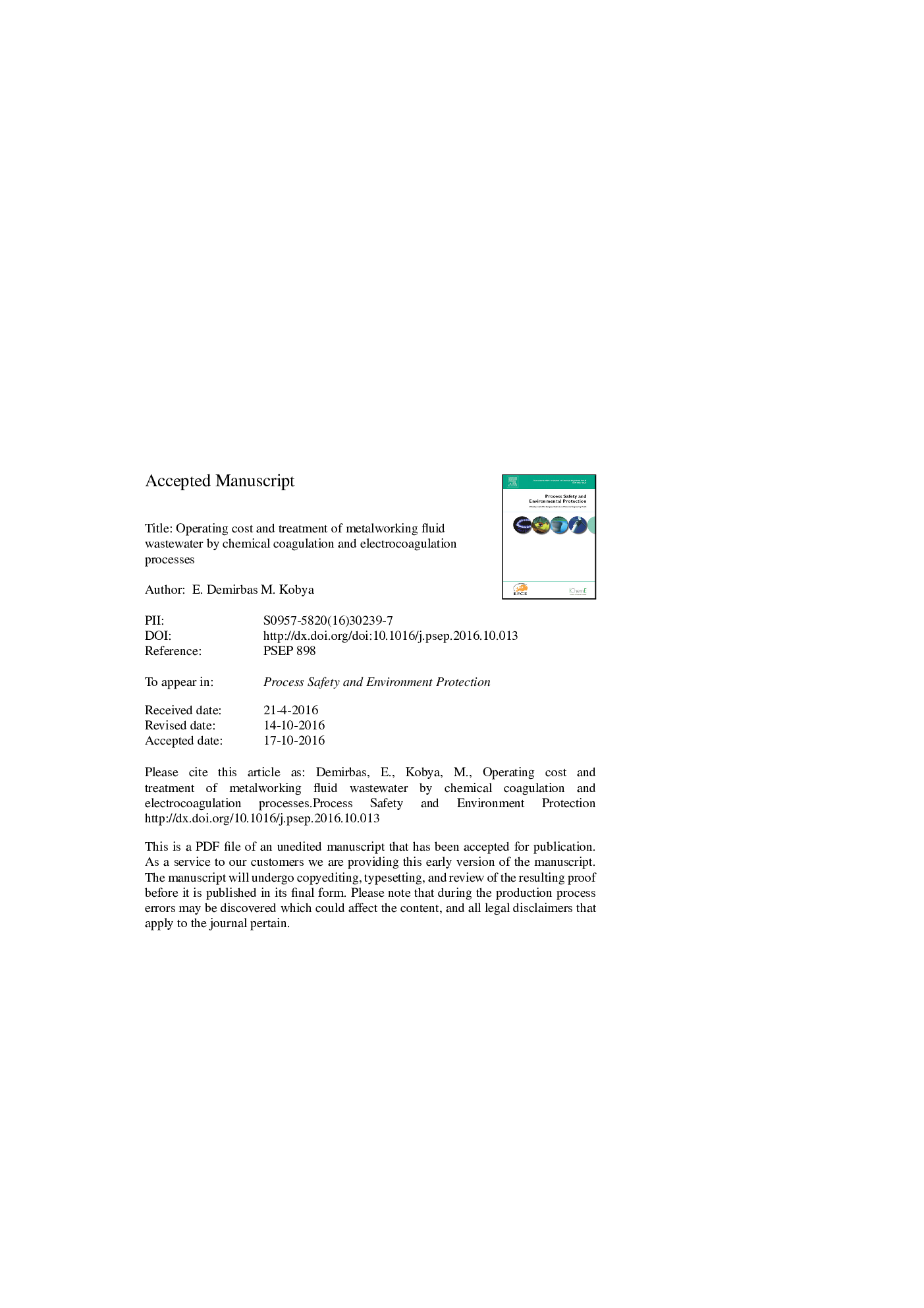| Article ID | Journal | Published Year | Pages | File Type |
|---|---|---|---|---|
| 4981025 | Process Safety and Environmental Protection | 2017 | 41 Pages |
Abstract
The present study dealt with treatment performances and operating cost of real metalworking fluid wastewater (MWFW) using chemical coagulation (CC) and electrocoagulation (EC) processes. The optimum coagulant dosage for COD and TOC removal efficiencies from the MWFW was determined with varying concentrations of alum, aluminium chloride, ferric sulphate, and ferric chloride. COD and TOC removal efficiencies in the coagulant dosage range of 50-1000Â mg/L were obtained as 65-97% and 49-81% for alum, 48-96% and 38-80% for aluminium chloride, 43-92% and 36-76% for ferric sulphate, and 55-93% and 41-77% for ferric chloride, respectively. The aluminium-based coagulants at a pH of 7.5 showed better performances than ferric-based coagulants in terms of COD and TOC removals. COD and TOC removal efficiencies from the MWFW in the EC process were 93% and 80% for Al electrode at a pH of 5, 80Â A/m2 and 25Â min, and 93% and 82% for Fe electrode at a pH of 7, 80Â A/m2 and 25Â min, respectively. Operating costs at the optimum conditions were calculated to be 1.190 US $/m3 for Al and 1.813 US $/m3 for Fe electrodes, respectively. Alum in chemical coagulation process provided a lower operating cost (0.12 US $/m3) as compared with the EC process using Al electrode (1.19 US $/m3). The results demonstrated that both investigated treatment processes were effective to treat wastewater from a metalworking plant.
Related Topics
Physical Sciences and Engineering
Chemical Engineering
Chemical Health and Safety
Authors
E. Demirbas, M. Kobya,
